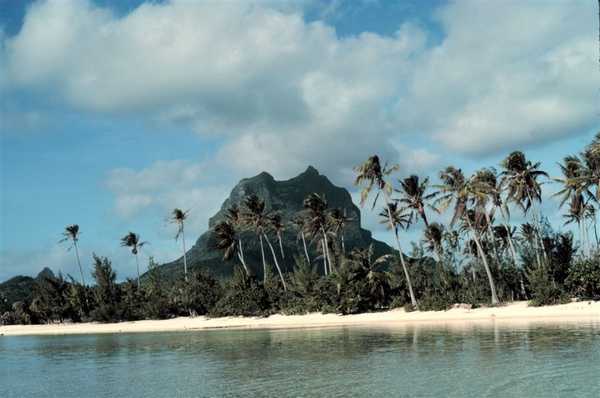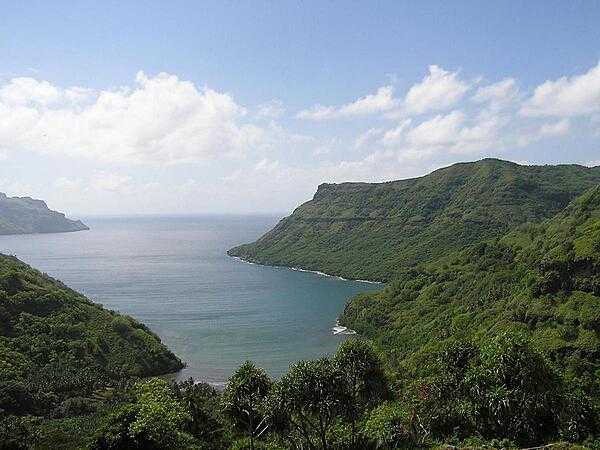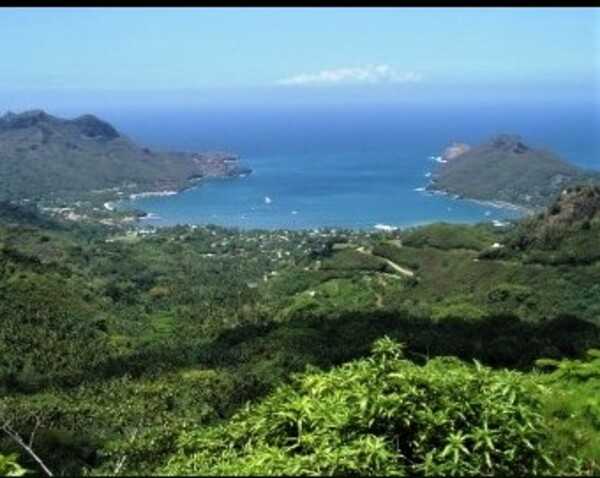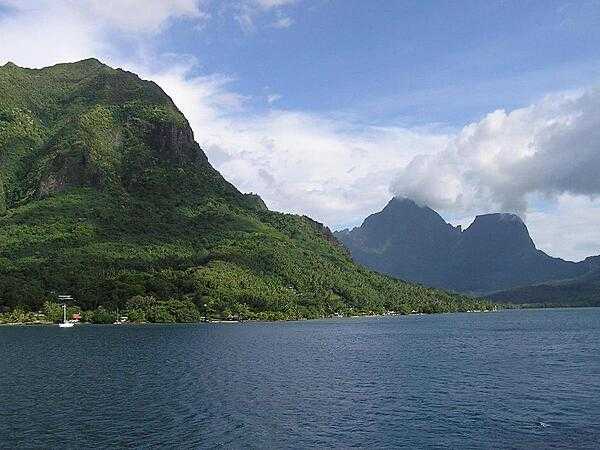French Polynesia - PF - PYF - Australia and Oceania
Last updated: January 05, 2026
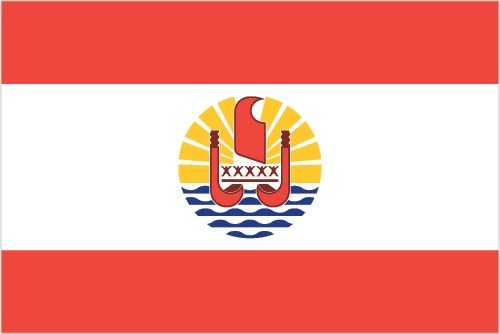

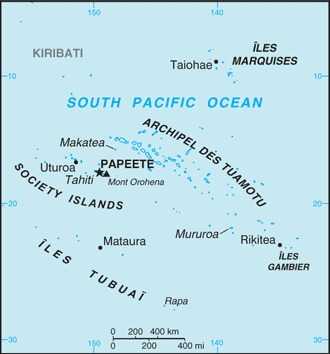
French Polynesia Images
French Polynesia Factbook Data
Dependency status
overseas country of France
note: overseas territory of France from 1946-2003; overseas collectivity of France since 2003, but it is often referred to as an overseas country due to its degree of autonomy
note: overseas territory of France from 1946-2003; overseas collectivity of France since 2003, but it is often referred to as an overseas country due to its degree of autonomy
Diplomatic representation from the US
embassy: none (overseas lands of France)
Age structure
0-14 years: 20.3% (male 31,659/female 30,006)
15-64 years: 68.7% (male 107,162/female 101,228)
65 years and over: 11% (2024 est.) (male 16,317/female 17,168)
15-64 years: 68.7% (male 107,162/female 101,228)
65 years and over: 11% (2024 est.) (male 16,317/female 17,168)
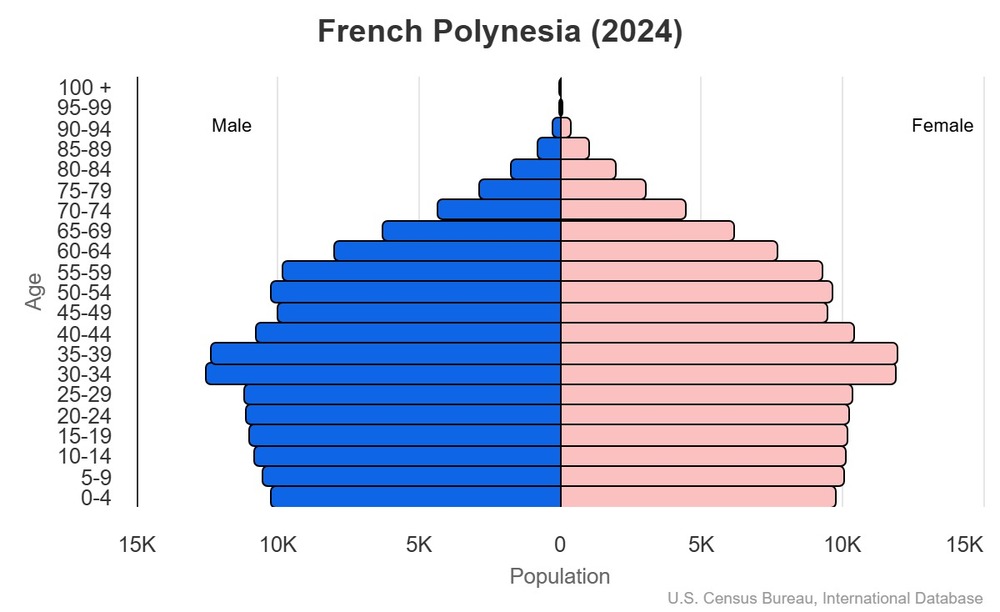
This is the population pyramid for French Polynesia. A population pyramid illustrates the age and sex structure of a country's population and may provide insights about political and social stability, as well as economic development. The population is distributed along the horizontal axis, with males shown on the left and females on the right. The male and female populations are broken down into 5-year age groups represented as horizontal bars along the vertical axis, with the youngest age groups at the bottom and the oldest at the top. The shape of the population pyramid gradually evolves over time based on fertility, mortality, and international migration trends.
For additional information, please see the entry for Population pyramid on the Definitions and Notes page.
For additional information, please see the entry for Population pyramid on the Definitions and Notes page.
Geographic coordinates
15 00 S, 140 00 W
Sex ratio
at birth: 1.05 male(s)/female
0-14 years: 1.06 male(s)/female
15-64 years: 1.06 male(s)/female
65 years and over: 0.95 male(s)/female
total population: 1.05 male(s)/female (2024 est.)
0-14 years: 1.06 male(s)/female
15-64 years: 1.06 male(s)/female
65 years and over: 0.95 male(s)/female
total population: 1.05 male(s)/female (2024 est.)
Natural hazards
occasional cyclonic storms in January
Area - comparative
slightly less than one-third the size of Connecticut
Background
French Polynesia consists of five archipelagos -- the Austral Islands, the Gambier Islands, the Marquesas Islands, the Society Islands, and the Tuamotu Archipelago. The Marquesas were first settled around 200 B.C. and the Society Islands around A.D. 300. Raiatea in the Society Islands became a center for religion and culture. Exploration of the other islands emanated from Raiatea, and by 1000, there were small permanent settlements in all the island groups. Ferdinand MAGELLAN was the first European to see the islands of French Polynesia in 1520. In 1767, British explorer Samuel WALLIS was the first European to visit Tahiti, followed by French navigator Louis Antoine de BOUGAINVILLE in 1768 and British explorer James COOK in 1769. King POMARE I united Tahiti and surrounding islands into the Kingdom of Tahiti in 1788. Protestant missionaries arrived in 1797, and POMARE I’s successor converted in the 1810s, along with most Tahitians. In the 1830s, Queen POMARE IV refused to allow French Catholic missionaries to operate, leading France to declare a protectorate over Tahiti and fight the French-Tahitian War of the 1840s in an attempt to annex the islands.
In 1880, King POMARE V ceded Tahiti and its possessions to France, changing its status into a colony. France then claimed the Gambier Islands and Tuamotu Archipelago and by 1901 had incorporated all five island groups into its establishments in Oceania. A Tahitian nationalist movement formed in 1940, leading France to grant French citizenship to the islanders in 1946 and change it to an overseas territory. In 1957, the islands’ name was changed to French Polynesia, and the following year, 64% of voters chose to stay part of France when they approved a new constitution. Uninhabited Mururoa Atoll was established as a French nuclear test site in 1962, and tests were conducted between 1966 and 1992 (underground beginning in 1975). France also conducted tests at Fangataufa Atoll, including its last nuclear test in 1996.
France granted French Polynesia partial internal autonomy in 1977 and expanded autonomy in 1984. French Polynesia was converted into an overseas collectivity in 2003 and renamed an overseas territory in 2004. Pro-independence politicians won a surprise majority in local elections that same year, but in subsequent elections, they have been relegated to a vocal minority. In 2013, French Polynesia was relisted on the UN List of Non-Self-Governing Territories.
In 1880, King POMARE V ceded Tahiti and its possessions to France, changing its status into a colony. France then claimed the Gambier Islands and Tuamotu Archipelago and by 1901 had incorporated all five island groups into its establishments in Oceania. A Tahitian nationalist movement formed in 1940, leading France to grant French citizenship to the islanders in 1946 and change it to an overseas territory. In 1957, the islands’ name was changed to French Polynesia, and the following year, 64% of voters chose to stay part of France when they approved a new constitution. Uninhabited Mururoa Atoll was established as a French nuclear test site in 1962, and tests were conducted between 1966 and 1992 (underground beginning in 1975). France also conducted tests at Fangataufa Atoll, including its last nuclear test in 1996.
France granted French Polynesia partial internal autonomy in 1977 and expanded autonomy in 1984. French Polynesia was converted into an overseas collectivity in 2003 and renamed an overseas territory in 2004. Pro-independence politicians won a surprise majority in local elections that same year, but in subsequent elections, they have been relegated to a vocal minority. In 2013, French Polynesia was relisted on the UN List of Non-Self-Governing Territories.
Environmental issues
sea-level rise; cyclones, storms, and tsunamis producing floods, landslides, erosion, and reef damage; droughts; fresh water scarcity
Exports - commodities
pearls, fish, aircraft parts, gas turbines, vanilla (2023)
note: top five export commodities based on value in dollars
note: top five export commodities based on value in dollars
Exports - partners
Japan 44%, USA 15%, France 12%, Netherlands 9%, China 5% (2023)
note: top five export partners based on percentage share of exports
note: top five export partners based on percentage share of exports
Administrative divisions
5 administrative subdivisions (subdivisions administratives, singular - subdivision administrative): Iles Australes (Austral Islands), Iles du Vent (Windward Islands), Iles Marquises (Marquesas Islands), Iles Sous-le-Vent (Leeward Islands), Iles Tuamotu-Gambier
note: the Leeward Islands and the Windward Islands together make up the Society Islands (Iles de la Société)
note: the Leeward Islands and the Windward Islands together make up the Society Islands (Iles de la Société)
Agricultural products
coconuts, fruits, cassava, sugarcane, pineapples, eggs, tropical fruits, watermelons, tomatoes, pork (2023)
note: top ten agricultural products based on tonnage
note: top ten agricultural products based on tonnage
Military and security forces
no regular military forces
Capital
name: Papeete (located on Tahiti)
geographic coordinates: 17 32 S, 149 34 W
time difference: UTC-10 (5 hours behind Washington, DC, during Standard Time)
etymology: the name derives from the Tahitian words pape (water) and ete (basket), referring to a place where people came to get water
geographic coordinates: 17 32 S, 149 34 W
time difference: UTC-10 (5 hours behind Washington, DC, during Standard Time)
etymology: the name derives from the Tahitian words pape (water) and ete (basket), referring to a place where people came to get water
Imports - commodities
cars, packaged medicine, refined petroleum, poultry, broadcasting equipment (2023)
note: top five import commodities based on value in dollars
note: top five import commodities based on value in dollars
Climate
tropical, but moderate
Coastline
2,525 km
Constitution
history: 4 October 1958 (French Constitution)
amendment process: French constitution amendment procedures apply
amendment process: French constitution amendment procedures apply
Exchange rates
Comptoirs Francais du Pacifique francs (XPF) per US dollar -
Exchange rates:
110.306 (2024 est.)
110.347 (2023 est.)
113.474 (2022 est.)
100.88 (2021 est.)
104.711 (2020 est.)
Exchange rates:
110.306 (2024 est.)
110.347 (2023 est.)
113.474 (2022 est.)
100.88 (2021 est.)
104.711 (2020 est.)
Executive branch
chief of state: President Emmanuel MACRON (since 14 May 2017), represented by High Commissioner of the Republic Alexander ROCHATTE (since 1 September 2025)
head of government: President of French Polynesia Moetai BROTHERSON (since 12 May 2023)
cabinet: Council of Ministers approved by the Assembly from a list of its members submitted by the president
election/appointment process: French president directly elected by absolute-majority popular vote in 2 rounds, if needed, for a 5-year term (eligible for a second term); high commissioner appointed by the French president on the advice of the French Ministry of Interior; French Polynesia president indirectly elected by Assembly of French Polynesia for a 5-year term (no term limits)
head of government: President of French Polynesia Moetai BROTHERSON (since 12 May 2023)
cabinet: Council of Ministers approved by the Assembly from a list of its members submitted by the president
election/appointment process: French president directly elected by absolute-majority popular vote in 2 rounds, if needed, for a 5-year term (eligible for a second term); high commissioner appointed by the French president on the advice of the French Ministry of Interior; French Polynesia president indirectly elected by Assembly of French Polynesia for a 5-year term (no term limits)
Flag
description: two horizontal red bands flank a wide white band in a 1:2:1 ratio; centered on the white band is a disk with a blue-and-white wave pattern depicting the sea on the lower half and a gold-and-white ray pattern depicting the sun on the upper half; a stylized red Polynesian canoe on the disk has a crew of five, represented by five stars
meaning: the stars symbolize the five island groups; red and white are traditional Polynesian colors
note 1: similar to the red-white-red flag of Tahiti, the largest and most populous of the French Polynesian islands, but the Tahitian flag has no emblem on the white band
note 2: the flag of France is used for official occasions
meaning: the stars symbolize the five island groups; red and white are traditional Polynesian colors
note 1: similar to the red-white-red flag of Tahiti, the largest and most populous of the French Polynesian islands, but the Tahitian flag has no emblem on the white band
note 2: the flag of France is used for official occasions
Independence
none (overseas land of France)
Industries
tourism, pearls, agricultural processing, handicrafts, phosphates
Judicial branch
highest court(s): Court of Appeal or Cour d'Appel (composition NA)
judge selection and term of office: judges assigned from France for 3 years
subordinate courts: Court of the First Instance or Tribunal de Première Instance; Court of Administrative Law or Tribunal Administratif
note: appeals beyond the French Polynesia Court of Appeal are heard by the Court of Cassation (in Paris)
judge selection and term of office: judges assigned from France for 3 years
subordinate courts: Court of the First Instance or Tribunal de Première Instance; Court of Administrative Law or Tribunal Administratif
note: appeals beyond the French Polynesia Court of Appeal are heard by the Court of Cassation (in Paris)
Land boundaries
total: 0 km
Land use
agricultural land: 8.7% (2023 est.)
arable land: 0.7% (2023 est.)
permanent crops: 7.5% (2023 est.)
permanent pasture: 0.5% (2023 est.)
forest: 43.1% (2023 est.)
other: 48.3% (2023 est.)
arable land: 0.7% (2023 est.)
permanent crops: 7.5% (2023 est.)
permanent pasture: 0.5% (2023 est.)
forest: 43.1% (2023 est.)
other: 48.3% (2023 est.)
Legal system
the laws of France apply
Legislative branch
legislature name: Assembly of French Polynesia (Assemblée de la Polynésie française)
legislative structure: unicameral
number of seats: 57 (directly elected)
electoral system: proportional representation
scope of elections: full renewal
term in office: 5 years
most recent election date: 4/30/2023
parties elected and seats per party: People's Servant People (38); List of the People (15); I Love Polynesia (3); Rally of the Mahoi People (1)
percentage of women in chamber: 49.1%
expected date of next election: 2028
note 1: elections held in two rounds; in the second round, 38 members are directly elected in multi-seat constituencies by a closed-list proportional representation vote; the party receiving the most votes gets an additional 19 seats
note 2: French Polynesia indirectly elects 2 senators to the French Senate for 6-year terms with one-half the membership renewed every 3 years and directly elects 3 deputies to the French National Assembly for 5-year terms
legislative structure: unicameral
number of seats: 57 (directly elected)
electoral system: proportional representation
scope of elections: full renewal
term in office: 5 years
most recent election date: 4/30/2023
parties elected and seats per party: People's Servant People (38); List of the People (15); I Love Polynesia (3); Rally of the Mahoi People (1)
percentage of women in chamber: 49.1%
expected date of next election: 2028
note 1: elections held in two rounds; in the second round, 38 members are directly elected in multi-seat constituencies by a closed-list proportional representation vote; the party receiving the most votes gets an additional 19 seats
note 2: French Polynesia indirectly elects 2 senators to the French Senate for 6-year terms with one-half the membership renewed every 3 years and directly elects 3 deputies to the French National Assembly for 5-year terms
Maritime claims
territorial sea: 12 nm
exclusive economic zone: 200 nm
exclusive economic zone: 200 nm
International organization participation
ITUC (NGOs), PIF, SPC, UPU, WMO
National holiday
Fête de la Fédération, 14 July (1790)
note 1: the local holiday is Internal Autonomy Day, 29 June (1880)
note 2: often incorrectly referred to as Bastille Day, France's national celebration commemorates the storming of the Bastille prison on 14 July 1789 and the establishment of a constitutional monarchy; other names for the holiday are la Fête nationale (National Holiday) and le Quatorze Juillet (14th of July)
note 1: the local holiday is Internal Autonomy Day, 29 June (1880)
note 2: often incorrectly referred to as Bastille Day, France's national celebration commemorates the storming of the Bastille prison on 14 July 1789 and the establishment of a constitutional monarchy; other names for the holiday are la Fête nationale (National Holiday) and le Quatorze Juillet (14th of July)
Nationality
noun: French Polynesian(s)
adjective: French Polynesian
adjective: French Polynesian
Natural resources
timber, fish, cobalt, hydropower
Geography - note
includes five archipelagoes: four volcanic (Iles Gambier, Iles Marquises, Iles Tubuai, Society Islands) and one coral (Archipel des Tuamotu); the Tuamotu Archipelago forms the largest group of atolls in the world -- 78 in total, 48 inhabited; Makatea in the Tuamotu Archipelago is one of the three great phosphate rock islands in the Pacific Ocean -- the others are Banaba (Ocean Island) in Kiribati and Nauru
Economic overview
small, territorial-island tourism-based economy; large French financing; lower EU import duties; Pacific Islands Forum member; fairly resilient from COVID-19; oil-dependent infrastructure
Political parties
I Love Polynesia (A here la Porinetia)
List of the People (Tapura Huiraatira)
People's Servant Party (Tavini Huiraatira)
Rally of the Maohi People (Amuitahiraʻa o te Nunaʻa Maohi) (formerly known as Popular Rally (Tahoeraa Huiraatira))
List of the People (Tapura Huiraatira)
People's Servant Party (Tavini Huiraatira)
Rally of the Maohi People (Amuitahiraʻa o te Nunaʻa Maohi) (formerly known as Popular Rally (Tahoeraa Huiraatira))
Suffrage
18 years of age; universal
Terrain
mixture of rugged high islands and low islands with reefs
Government type
parliamentary democracy (Assembly of French Polynesia); an overseas collectivity of France
Military - note
defense is the responsibility of France, and it maintains a military garrison in French Polynesia (Forces Armées en Polynésie Française, FAPF)
Government - note
French Polynesia has acquired autonomy from France in all areas except those relating to police, monetary policy, tertiary education, immigration, and defense and foreign affairs; the duties of its president are similar to those of the French prime minister
Country name
conventional long form: Overseas Lands of French Polynesia
conventional short form: French Polynesia
local long form: Pays d'outre-mer de la Polynésie française
local short form: Polynésie Française
former: Establishments in Oceania, French Establishments in Oceania
etymology: the term "Polynesia" is an 18th-century construct composed of two Greek words, poly (many) and nesoi (islands), and refers to the more than 1,000 islands scattered over the central and southern Pacific Ocean
conventional short form: French Polynesia
local long form: Pays d'outre-mer de la Polynésie française
local short form: Polynésie Française
former: Establishments in Oceania, French Establishments in Oceania
etymology: the term "Polynesia" is an 18th-century construct composed of two Greek words, poly (many) and nesoi (islands), and refers to the more than 1,000 islands scattered over the central and southern Pacific Ocean
Location
Oceania, five archipelagoes (Archipel des Tuamotu, Iles Gambier, Iles Marquises, Iles Tubuai, Society Islands) in the South Pacific Ocean about halfway between South America and Australia
Map references
Oceania
Irrigated land
10 sq km (2012)
Diplomatic representation in the US
none (overseas lands of France)
Internet users
percent of population: 73% (2017 est.)
Internet country code
.pf
GDP (official exchange rate)
$6.563 billion (2024 est.)
note: data in current dollars at official exchange rate
note: data in current dollars at official exchange rate
Urbanization
urban population: 62.3% of total population (2023)
rate of urbanization: 0.65% annual rate of change (2020-25 est.)
rate of urbanization: 0.65% annual rate of change (2020-25 est.)
Broadcast media
French public overseas broadcaster Réseau Outre-Mer provides 2 TV channels and 1 radio station; 1 government-owned TV station; a small number of privately owned radio stations (2019)
Drinking water source
improved:
total: 100% of population (2022 est.)
unimproved:
total: 0% of population (2022 est.)
total: 100% of population (2022 est.)
unimproved:
total: 0% of population (2022 est.)
National anthem(s)
title: "Ia Ora 'O Tahiti Nui" (Long Live Tahiti Nui)
lyrics/music: Maeva BOUGES, Irmine TEHEI, Angele TEROROTUA, Johanna NOUVEAU, Patrick AMARU, Louis MAMATUI, and Jean-Pierre CELESTIN (created both the lyrics and music)
history: adopted 1993; serves as a local anthem
_____
title: "La Marseillaise" (The Song of Marseille)
lyrics/music: Claude-Joseph ROUGET de Lisle
history: official anthem, as a French territory
lyrics/music: Maeva BOUGES, Irmine TEHEI, Angele TEROROTUA, Johanna NOUVEAU, Patrick AMARU, Louis MAMATUI, and Jean-Pierre CELESTIN (created both the lyrics and music)
history: adopted 1993; serves as a local anthem
_____
title: "La Marseillaise" (The Song of Marseille)
lyrics/music: Claude-Joseph ROUGET de Lisle
history: official anthem, as a French territory
Major urban areas - population
136,000 PAPEETE (capital) (2018)
Physician density
0.02 physicians/1,000 population (2023)
National symbol(s)
outrigger canoe, Tahitian gardenia flower (Gardenia taitensis)
GDP - composition, by end use
household consumption: 70.4% (2023 est.)
government consumption: 30.5% (2023 est.)
investment in fixed capital: 21.7% (2023 est.)
investment in inventories: 0% (2023 est.)
exports of goods and services: 23.1% (2023 est.)
imports of goods and services: -45.6% (2023 est.)
note: figures may not total 100% due to rounding or gaps in data collection
government consumption: 30.5% (2023 est.)
investment in fixed capital: 21.7% (2023 est.)
investment in inventories: 0% (2023 est.)
exports of goods and services: 23.1% (2023 est.)
imports of goods and services: -45.6% (2023 est.)
note: figures may not total 100% due to rounding or gaps in data collection
Dependency ratios
total dependency ratio: 45.7 (2024 est.)
youth dependency ratio: 29.6 (2024 est.)
elderly dependency ratio: 16.1 (2024 est.)
potential support ratio: 6.2 (2024 est.)
youth dependency ratio: 29.6 (2024 est.)
elderly dependency ratio: 16.1 (2024 est.)
potential support ratio: 6.2 (2024 est.)
Population distribution
the majority of the population lives in the Society Islands, one of five archipelagos that includes the most populous island, Tahiti, with approximately 70% of the nation's population
Electricity access
electrification - total population: 100% (2022 est.)
Civil aircraft registration country code prefix
F-OH
Sanitation facility access
improved:
total: 97% of population (2022 est.)
unimproved:
total: 3% of population (2022 est.)
total: 97% of population (2022 est.)
unimproved:
total: 3% of population (2022 est.)
Ethnic groups
Polynesian 78%, Chinese 12%, local French 6%, metropolitan French 4%
Religions
Protestant 54%, Roman Catholic 30%, other 10%, no religion 6%
Languages
French (official) 73.5%, Tahitian 20.1%, Marquesan 2.6%, Austral languages 1.2%, Paumotu 1%, other 1.6% (2017 est.)
major-language sample(s):
The World Factbook, une source indispensable d'informations de base. (French)
The World Factbook, the indispensable source for basic information.
major-language sample(s):
The World Factbook, une source indispensable d'informations de base. (French)
The World Factbook, the indispensable source for basic information.
French audio file
Imports - partners
France 26%, China 11%, USA 10%, NZ 7%, Malaysia 4% (2023)
note: top five import partners based on percentage share of imports
note: top five import partners based on percentage share of imports
Elevation
highest point: Mont Orohena 2,241 m
lowest point: Pacific Ocean 0 m
lowest point: Pacific Ocean 0 m
Waste and recycling
municipal solid waste generated annually: 147,000 tons (2024 est.)
National heritage
total World Heritage Sites: 2 (1 cultural, 1 mixed); note - excerpted from the France entry
selected World Heritage Site locales: Taputapuātea (c); Te Henua Enata – The Marquesas Islands (m)
selected World Heritage Site locales: Taputapuātea (c); Te Henua Enata – The Marquesas Islands (m)
Coal
imports: 1 metric tons (2023 est.)
Electricity generation sources
fossil fuels: 66% of total installed capacity (2023 est.)
solar: 7% of total installed capacity (2023 est.)
hydroelectricity: 27% of total installed capacity (2023 est.)
solar: 7% of total installed capacity (2023 est.)
hydroelectricity: 27% of total installed capacity (2023 est.)
Petroleum
refined petroleum consumption: 7,000 bbl/day (2023 est.)
Currently married women (ages 15-49)
66.8% (2017 est.)
Remittances
9.1% of GDP (2023 est.)
10% of GDP (2022 est.)
9.5% of GDP (2021 est.)
note: personal transfers and compensation between resident and non-resident individuals/households/entities
10% of GDP (2022 est.)
9.5% of GDP (2021 est.)
note: personal transfers and compensation between resident and non-resident individuals/households/entities
Ports
total ports: 6 (2024)
large: 0
medium: 0
small: 1
very small: 5
ports with oil terminals: 1
key ports: Atuona, Baie Taiohae, Papeete, Port Rikitea, Uturoa, Vaitape
large: 0
medium: 0
small: 1
very small: 5
ports with oil terminals: 1
key ports: Atuona, Baie Taiohae, Papeete, Port Rikitea, Uturoa, Vaitape
National color(s)
red, white
Labor force
119,100 (2024 est.)
note: number of people ages 15 or older who are employed or seeking work
note: number of people ages 15 or older who are employed or seeking work
Youth unemployment rate (ages 15-24)
total: 36.9% (2024 est.)
male: 33.5% (2024 est.)
female: 41.5% (2024 est.)
note: % of labor force ages 15-24 seeking employment
male: 33.5% (2024 est.)
female: 41.5% (2024 est.)
note: % of labor force ages 15-24 seeking employment
Unemployment rate
11.8% (2024 est.)
11.8% (2023 est.)
11.9% (2022 est.)
note: % of labor force seeking employment
11.8% (2023 est.)
11.9% (2022 est.)
note: % of labor force seeking employment
Population
total: 303,540 (2024 est.)
male: 155,138
female: 148,402
male: 155,138
female: 148,402
Carbon dioxide emissions
1.01 million metric tonnes of CO2 (2023 est.)
from petroleum and other liquids: 1.01 million metric tonnes of CO2 (2023 est.)
from petroleum and other liquids: 1.01 million metric tonnes of CO2 (2023 est.)
Area
total : 4,167 sq km (118 islands and atolls; 67 are inhabited)
land: 3,827 sq km
water: 340 sq km
land: 3,827 sq km
water: 340 sq km
Real GDP (purchasing power parity)
$6.007 billion (2024 est.)
$5.935 billion (2023 est.)
$5.892 billion (2022 est.)
note: data in 2015 dollars
$5.935 billion (2023 est.)
$5.892 billion (2022 est.)
note: data in 2015 dollars
Airports
54 (2025)
Telephones - mobile cellular
total subscriptions: 328,000 (2022 est.)
subscriptions per 100 inhabitants: 107 (2022 est.)
subscriptions per 100 inhabitants: 107 (2022 est.)
Inflation rate (consumer prices)
6.4% (2022 est.)
0.5% (2021 est.)
-0.1% (2020 est.)
note: annual % change based on consumer prices
0.5% (2021 est.)
-0.1% (2020 est.)
note: annual % change based on consumer prices
Current account balance
$411.963 million (2016 est.)
$291.182 million (2015 est.)
$264.32 million (2014 est.)
note: balance of payments - net trade and primary/secondary income in current dollars
$291.182 million (2015 est.)
$264.32 million (2014 est.)
note: balance of payments - net trade and primary/secondary income in current dollars
Real GDP per capita
$23,300 (2024 est.)
$22,800 (2023 est.)
$20,700 (2022 est.)
note: data in 2015 dollars
$22,800 (2023 est.)
$20,700 (2022 est.)
note: data in 2015 dollars
Broadband - fixed subscriptions
total: 78,000 (2022 est.)
subscriptions per 100 inhabitants: 28 (2022 est.)
subscriptions per 100 inhabitants: 28 (2022 est.)
Electricity
installed generating capacity: 345,000 kW (2023 est.)
consumption: 669.5 million kWh (2023 est.)
transmission/distribution losses: 42.663 million kWh (2023 est.)
consumption: 669.5 million kWh (2023 est.)
transmission/distribution losses: 42.663 million kWh (2023 est.)
Merchant marine
total: 24 (2023)
by type: general cargo 14
by type: general cargo 14
Imports
$1.66 billion (2021 est.)
$1.75 billion (2020 est.)
$2.24 billion (2019 est.)
note: balance of payments - imports of goods and services in current dollars
$1.75 billion (2020 est.)
$2.24 billion (2019 est.)
note: balance of payments - imports of goods and services in current dollars
Exports
$162 million (2021 est.)
$94.4 million (2020 est.)
$184 million (2019 est.)
note: balance of payments - exports of goods and services in current dollars
$94.4 million (2020 est.)
$184 million (2019 est.)
note: balance of payments - exports of goods and services in current dollars
Telephones - fixed lines
total subscriptions: 139,000 (2022 est.)
subscriptions per 100 inhabitants: 50 (2022 est.)
subscriptions per 100 inhabitants: 50 (2022 est.)
Life expectancy at birth
total population: 78.9 years (2024 est.)
male: 76.6 years
female: 81.3 years
male: 76.6 years
female: 81.3 years
Real GDP growth rate
3% (2023 est.)
4.5% (2022 est.)
2.1% (2021 est.)
note: annual GDP % growth based on constant local currency
4.5% (2022 est.)
2.1% (2021 est.)
note: annual GDP % growth based on constant local currency
GDP - composition, by sector of origin
agriculture: 2.2% (2020 est.)
industry: 10.6% (2020 est.)
services: 75.9% (2020 est.)
note: figures may not total 100% due to non-allocated consumption not captured in sector-reported data
industry: 10.6% (2020 est.)
services: 75.9% (2020 est.)
note: figures may not total 100% due to non-allocated consumption not captured in sector-reported data
Gross reproduction rate
0.87 (2025 est.)
Net migration rate
-0.56 migrant(s)/1,000 population (2025 est.)
Median age
total: 35.8 years (2025 est.)
male: 35 years
female: 35.6 years
male: 35 years
female: 35.6 years
Total fertility rate
1.78 children born/woman (2025 est.)
Infant mortality rate
total: 4.2 deaths/1,000 live births (2025 est.)
male: 5.2 deaths/1,000 live births
female: 3.4 deaths/1,000 live births
male: 5.2 deaths/1,000 live births
female: 3.4 deaths/1,000 live births
Death rate
5.84 deaths/1,000 population (2025 est.)
Birth rate
12.7 births/1,000 population (2025 est.)
Population growth rate
0.63% (2025 est.)
